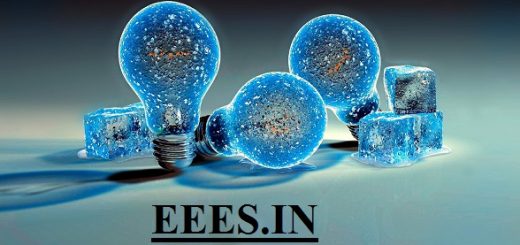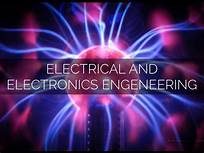KPSC Assistant Electrical Inspector Syllabus
1. Basic Electrical Engineering
- Basic electrical laws: Ohm’s law, Kirchoff’s laws – solution of series and parallel circuits with dc excitation.
- Analysis of DC networks
- Magnetic circuits: MMF, field strength, flux density, reluctance, electromagnetic induction, Faraday’s laws, Lenz’s law, statically and dynamically induced EMFs, self and mutual induction, co-efficient of coupling.
- Principle of the generation of alternating current – waveforms – frequency, period, average and RMS values, form factor.
- Generation of 3 phase ac voltage, star and delta connections, voltage & current relationships in star and delta.power measurement in 3-phase networks
- Types of lamps, the necessity of earthing.
2. Electrical Measurement and Instruments
- Electrical standards, Error analysis, Measurement of current, voltage, power, energy, power factor, resistance, inductance capacitance frequency and loss angle.
- Principles of PMMC, moving iron, and electrodynamometer type instruments, error analysis, measurement of voltage, current, power energy and power factor, induction type watt-hour meter, DC bridges and AC bridges, magnetic measurements, Instrument transformers, digital voltmeters and multimeters, digital measurements of frequency, phase angle, time interval.
- CRO, frequency counter, digital voltmeter, transducers, Thermocouples, Thermistor, LVDT, strain gauges, Piezo electric crystal, Measurement of non-electrical quantities like, pressure, velocity, temperature, flow rate, displacement acceleration and strain. The electronic energy meter, high voltage measurements, oscilloscopes, Data acquisition systems, Transducers for temperature, flow and pressure.
3. Basic Electronics Engineering
- Devices – working principle of PN junction, Zener diode and BJT. Systems – Rectifiers: Half wave, Full-wave and Bridge.
- Filters: Capacitors and Inductors.
- BJT and FET amplifiers – biasing circuits, types of amplifiers, low frequency and high-frequency considerations. Oscillators and feedback amplifiers, operational amplifier circuits and applications – simple active filters. VCO’s and timers.
- Voltage regulators using linear IC’s, combinational and sequential logic circuits – flip flops, counters, shift registers, TTL & CMOS logic families, memories – ROM, PROM, EPROM & RAM.
- Schmitt triggers, multivibrators, sample and hold circuits, A to D and D to A converters, 8 bit and 16-bit microprocessor basics, architecture, programming and interfacing.
- Thyristors, TRIACs, GTO’s MOSFETS & IGBTS – principles of operation, triggering circuits, phase control rectifiers, bridge converters – fully controlled and half controlled Inverters and choppers.
- Amplifiers & Oscillators – Common Emitter RC coupled amplifier and its frequency response.
- Digital electronics.
- Principles of Wein-bridge oscillator. Op-amps: Basics, inverting and noninverting amplifier.
- Communication – Need for modulation, principles of AM and FM.
4. Electromagnetic Theory
- Electro static and electro magnetic fields, vector methods, Fields in dielectric, conducting and magnetic materials, Laplace and Poisson’s equation. Time varying fields, Maxwell’s equation, Poynting Theory, properties of transmission lines.
5. Electronic Circuits and Field Theory
- Node and Mesh analysis, transient response of dc and ac networks, sinusoidal steady-state analysis, resonance, two-port network, independent and dependent voltage and current sources, coupled circuits, tuned coupled circuits, Network theorems – superposition, reciprocity, substitution, compensation, Thevenin, Norton, Millman, Telligen and Maximum power transfer theorems.
- Analysis of Three-phase circuits, symmetrical components, graph theory – analysis of network using cut-set and tri-set.
- Filters constant – K low pass, high pass and band-pass filters – m derived, low pass, high pass and bandpass filters.
- Gauss’s law and applications, electric field, electric potential, electric field lines, electric dipoles, potential gradient, conductors, dielectrics, capacitance, polarisation, method of images, dielectric strength, Biot-Savart’s law, Ampere’s circuital law, Stoke’s theorem, scalar and vector magnetic potential, the force between current-carrying wires, Maxwell’s equation – wave equation – Poynting theorem.
6. Electrical Machines
- Single-phase Transformer – leakage reactance, equivalent circuit, losses and efficiency, voltage regulation, OC, SC and Sumpner’s tests, Distribution transformer, all-day efficiency, autotransformer – saving of copper three-phase transformer – connections, vector groupings, parallel operation.
- DC machines – Types of excitation, constructional features.Principle of operation of dc motor & generator, single-phase transformer and three-phase induction motor.
- Synchronous machines: – constructional features, winding factor.
- DC generator – Emf equation, armature reaction & commutation, characteristics, voltage build-up, applications.
- DC motor – Torque equation, characteristics of shunt, series & compound motors, necessity & types of starters, speed control, applications, Swinburne’s test, Hopkinson’s test.
- Alternator: Types, synchronous reactance, voltage regulation, emf and MMF methods, short circuit ratio, Two reaction theory, the alternator on the infinite bus, power angle characteristics, parallel operation, the effect of variation of power input & excitation.
- Synchronous motor – the principle of operation, methods of starting, hunting & its
reduction. - Three-phase induction motor – constructional features, types, slip rotor frequency, power flow, Torque – slip curve, the effect of rotor resistance, starting methods, speed control.
- Single-phase induction motor – double field revolving theory, starting methods.
- Basic concepts of ac and dc drives.
7. Power Systems
- General layout – Types of power stations, economics of different types, base load and peak load stations, load factor and its effects, pumped storage schemes.
- Conventional and non-conventional systems of power generation, power plant economics, load factor, demand factor, diversity factor, Transmission line parameters – T and ∏ models GMD and GMR, ABCD constants, overload lines – arrangement of conductors – sag, economic span, choice of transmission voltage, types of insulators, string efficiency, distribution systems – types, comparison of DC and AC single phase and 3 phase systems.
- One-line diagrams per unit quantities, the formation of Y bus and Z Bus. Load flow studies – Gauss-Seidel, Newton Raphson and Fast decoupled load flow methods.
- Calculation of line parameters, concepts of short, medium and long transmission lines, ABCD
- parameters, insulators, Corona, P.U. quantities, fault calculations, stability, steady state and transient stability, equal area criterion, ALFC and AVR control for real time operation of interconnected systems.
- Faults on power systems – LG, LL, LLG and 3 phase faults. Fault analysis using Z Bus.
- Power system stability, steady-state transient and dynamic stability, equal area criterion, swing curve.
- Protective relays: types and operation, protective zones, different protection schemes.
- Circuit Breakers – types and operations, selection of circuit breakers, calculation of fault KVA, protection against lightning and overvoltages.
8. Control Systems
- Open-loop and closed-loop system: Transfer function, force-voltage & force-current analogy, block diagrams, signal flow graphs – Mason’s gain formula – characteristic equation, time-domain analysis – transient & steady-state responses – time domain specifications & steady-state error.
- Concept of stability – Routh’s stability criterion – Root locus – effect of the addition of poles and zeros.
- Frequency domain analysis – Nyquist & Bode plots, gain margins and phase margin, lag, lead and lag-lead compensators and their design using Bode plot.
- State-space models, state transition matrix, the relationship between state equations and transfer function, controllability and observability.
- Nonlinear system: – characteristics, types of non-linearities, describing functions analysis – concept, singular points – focus, centre, node and saddle points – limit cycle.
- Types of signals and systems, sampling process, sampling theorem, the convolution of discrete-time signals, analysis of LTI systems using Z transforms. DFT and FFT, Types of digital filters.
9. Power Utilisation
- Industrial Drives – Motors for various drives – Braking methods – Speed control of motors
- Electric traction – speed – time curves – mechanics -Economics of rail traction – Mechanics of train movement – Estimation of power and energy requirements
- Illumination – Laws Factory lighting – Street lighting
- Electric heating – Advantages, types and applications.
DOWN LOAD LINK : Assistant Electrical Inspector




Recent Comments